Do you want to know about how to manage asbestos in your workplace?
This guide is for businesses, public organisations, and premises managers from OMC Consultants on how to manage asbestos.
Contents
Asbestos Management Blueprint (AMB) – Mitigating The Risk Of Asbestos On Your Premises
What Needs To Be Included In Your Asbestos Management Plan?
Managing Employee Responses To Asbestos
Asbestos Management Blueprint (AMB)– MitigatingThe Risk
Of Asbestos On Your Premises
75% of commercial buildings contain some type of asbestos. Described by the Health and Safety Executive (HSE) as a hidden killer, it had widespread applications in areas such as insulation, fire protection, and chemical resistance until its use in new building developments was outlawed in 2000.
As such, asbestos is found in everything from windowsills to floor tiles, in thousands of commercial and public buildings across the country. Therefore, asbestos is rarely obvious to the untrained eye, and often hides under a number of established and trusted brand names such as LDR Board and Masterboard. The use of asbestos has been banned for over 20 years, but any buildings constructed prior to the year 2000 –
and any that use older machinery – are likely to contain it.
When left undisturbed, asbestos is relatively safe, and it isn’t usually necessary to completely remove asbestos from the site unless it poses a health and safety threat. The threat comes when exposed asbestos particles are released into the air – e.g. during building or maintenance work – as once this is inhaled, it can result in life-shortening illnesses.
Thankfully, comprehensive solutions are available to ensure that asbestos is managed in a way that is safe, cost-effective, and guaranteed. This guide explains the legislative and practical requirements needed for the secure management and risk mitigation of asbestos. It also offers expert advice, useful links, and a formula for creating a personalised asbestos management plan.
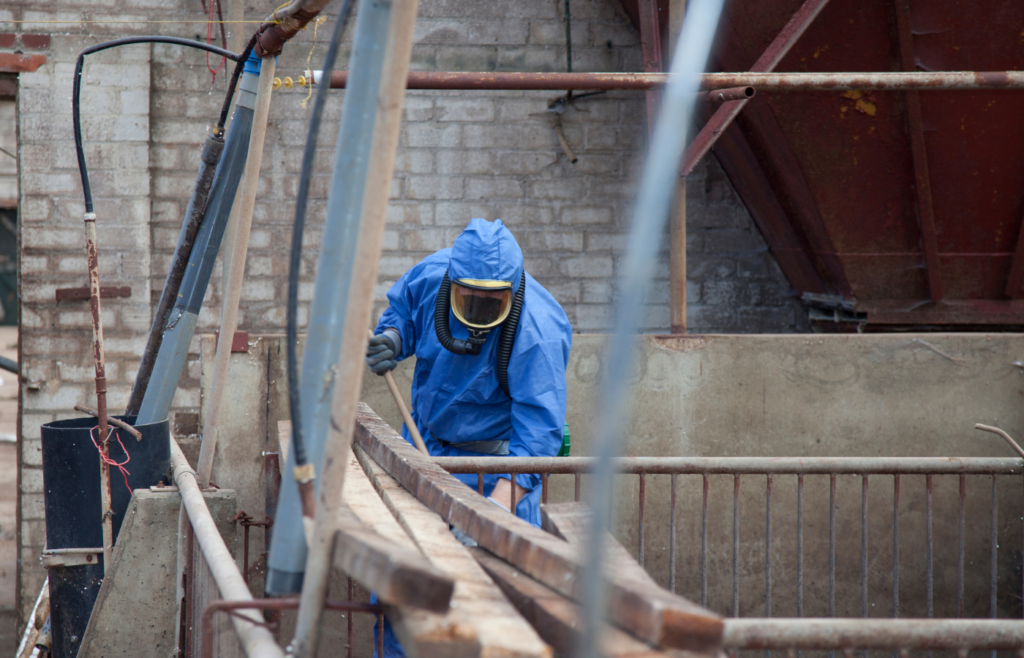
Who is at risk of asbestos-related illnesses?
Asbestos is a group of minerals that have long, extremely sharp fibres. When these are disturbed and become airborne, they can be easily inhaled, where they become embedded in the soft tissues of the lungs and other organs. The types of diseases that this can cause include Lung cancer, Pleural Mesothelioma and Asbestosis. Autoimmune disorders and terminal cancers, many of which have a lengthy incubation period.
Anyone working in direct proximity to asbestos is potentially at risk, and this is particularly the case if the material is disturbed. As such, demolition workers, service installers, plumbers, joiners, electricians, and insulation workers are all vulnerable, unless the sources of asbestos are accurately identified and assessed, and anyone who encounters asbestos has the appropriate level of Asbestos Training so the correct management precautions can be followed.
Equally, when repairs are carried out to industrial machinery or during building maintenance, everybody in the vicinity is at risk. Consequently, the World Health Organisation (WHO) estimates that at least 107,000 people per year die from asbestos-related illnesses.
When is an asbestos management plan needed?
The legal responsibility for asbestos management lies with the Asbestos Duty Holder, who is either the owner, the leaseholder or a competent person, although in practice this responsibility can often be delegated, (eg to a Facilities Management company).
Whether residential, commercial, or industrial, any building constructed prior to the year 2000 should be assumed to contain asbestos, unless the presence of Asbestos Containing Materials (ACMs) has been ruled out by a professional survey. Sites using old equipment, such as ovens, may contain ACMs within this equipment. All commercial property owners and landlords should, therefore, carry out an asbestos risk assessment and establish an asbestos management plan if any hazards are identified.
The presence of ACMs must be established via a survey, in accordance with the Control of Asbestos Regulations (2012) criteria.
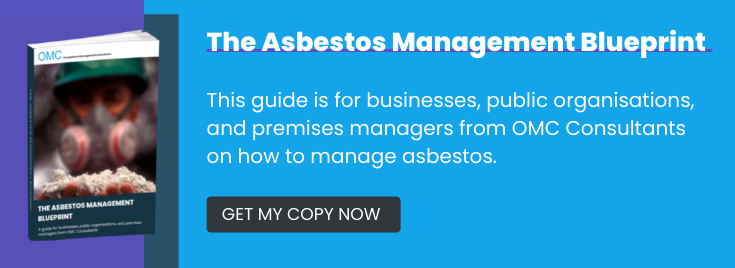
When is an asbestos survey and risk assessment required?
Property owners should undertake an asbestos survey before purchasing premises built before the year 2000, or before carrying out an extension, demolition, or renovation on such a building.
For day-to-day safety, there are three main types of survey:
1. Asbestos Management Survey
2. Asbestos Refurbishment Survey
3. Asbestos Demolition Survey
An Asbestos Management Survey is relatively non-intrusive and used to ensure that there are no ‘active’ ACM hazards on the site. A hazard is active if there is a risk of people coming into close proximity of an ACM. If the ACMs are inaccessible then the hazard is still present, but is not considered active until the materials are moved, exposed, or disturbed.
Such surveys are the starting point for an Asbestos Risk Assessment – to determine the extent and severity of the risk – and the formulation of an Asbestos Management Plan, which will be discussed in detail later in this guide.
When a building needs restructuring work or demolition, a much more involved Asbestos Refurbishment Survey or Asbestos Demolition Survey is required. These aim to locate asbestos hidden in cladding, typically within inaccessible void areas of which there are many within a building beneath floor coverings and similar and are therefore more intrusive. However, the risks posed by hidden asbestos are high during demolitions, particularly as the material is frequently untreated and therefore exposed, so invasive surveys are the frontline of preventing potentially serious safety lapses.
What is an Asbestos Management Plan?
An Asbestos Management Plan (AMP) uses a HSE approved scoring system as detailed in HSG 227, to determine the priorities regarding asbestos safety. The materials are scored, (ie Material Assessment) according to the product type, the extent of damage or deterioration, the surface type, and the Asbestos type. In addition, a similar assessment of priority scores is carried out relating to the use and maintenance of the site where ACMs have been identified.
Based on the total score, plans can be formulated to either remove the asbestos, limit/ restrict access, apply specialised elastomeric coatings or enclose the ACM to ensure its safety. For companies, this means that dangers can be identified and removed or mitigated in a way that is well-organised and cost-effective.
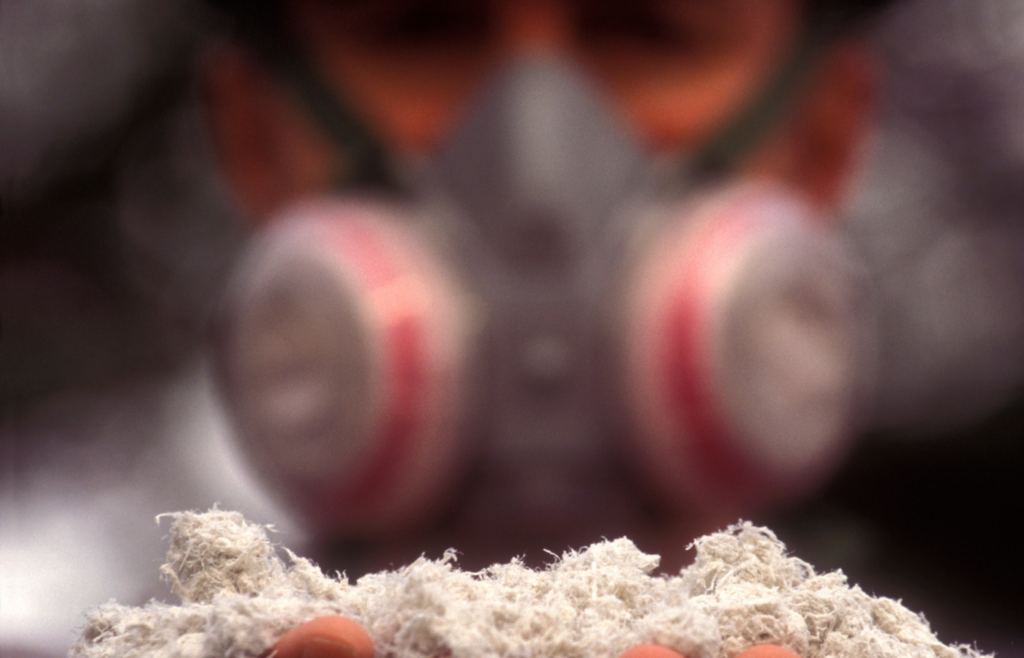
Types Of Asbestos
There are six main types of asbestos, each with its own material characteristics. Amphibole Asbestos including Blue (Crocidolite) and brown (Amosite) asbestos were banned by law in 1985. Manufacture and supply of all asbestos were banned by the end of 1999.
All asbestos types are considered potentially hazardous to human health. Although the final treatment and management pathway depends on additional variables, such as the type of application, and whether the asbestos has been treated to reduce the dissemination of airborne fibres, understanding the differences between asbestos types is important for establishing the nature of the hazard and the best management strategy.
1) Chrysolite
Once used in thousands of commercial products, Chrysolite – or ‘white asbestos’ as it is often known – is typically found in various production areas, including asbestos cement products (eg pipes, gutters corrugated and flat building cladding sheets); reinforced composite materials; CAF gaskets, mouldings, mastics. As such, white asbestos is still highly prevalent in buildings and represents one of the most common hazards.
2) Crocidolite
Crocidolite of the asbestos types is the most heat resistant with the greatest resistance to Acids. Also referred to simply as ‘blue asbestos’, it has previously been widely used in applications from pipe insulation typically within plant room and service areas. It has particularly been found as spray coatings, where the asbestos content can be as high as 85%. Historically, this has caused major problems in factories, warehouses, car parks, theatres, and institutional settings where Crocidolite has been sprayed onto ceiling beams as a form of fire protection. Spray coatings can be easily disturbed and can crack and peel, making Crocidolite a primary contributor to asbestos-based cancers.
3) Amosite
With its grey like appearance, Amosite is also known as ‘brown Asbestos’. Primarily mined in South Africa, amosite is characterized by sharp, needle-like fibers that can be easily inhaled. The long fibres make it particularly strong and flexible, enabling its widespread use in insulating boards as internal ceiling and wall linings, pipe insulation, and thermal insulation.
4) Anthophyllite
Another type of Asbestos, (ie rare Asbestos type), Anthophyllite was widely used in composite flooring. Its sharp fibres are especially dangerous, and its presence as a contaminant in substances such as chalk, Vermiculite, and Chrysolite make it a hidden threat.
5-6) Tremolite and Actinolite
Due to their brittle structures, neither tremolite nor actinolite was ever intended for use as building materials and have rarely been associated with building products. The occurrence of Tremolite has been associated with imports of talc historically within the UK, as a contaminant within vermiculite in addition to Wollastonite.

How are different types of asbestos treated?
Both the type of asbestos and the application need to be considered when formulating the correct treatment pathway. To help the Asbestos Duty Holders in their decision-making process, the HSE has divided asbestos treatment into six main areas:
These guides give comprehensive advice from the HSE, which can be accessed by clicking the links above. As there is so much variance regarding asbestos hazards, the guides offer suggestions to help the decision-making process. For instance, asbestos-containing cement is easily repaired and sealed with alkali-resistant, water-permeable sealant. However, the material is highly vulnerable to accidental impact damage, so risk assessments may conclude that impact damage needs to be minimised with the installation of protective panels. As such, the guides should be considered as a starting point prior to surveying, which is crucial in formulating a safe, strategic, and cost-effective AMP.
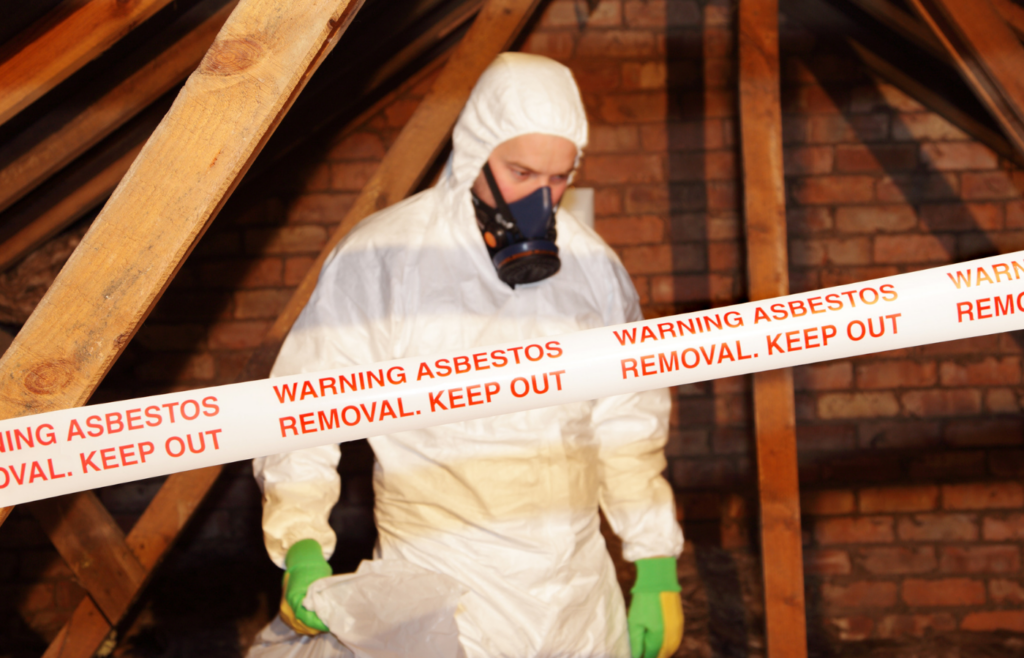
What Needs To Be Included In Your Asbestos Management Plan?
ACMs are unique to each site, and therefore vary considerably. However, according to the HSE, all plans must cover the same basic details:
- Who is responsible for implementing and monitoring specific areas of the plan
- Plans for work on ACMs
- Schedule for monitoring
- Communication plans
The HSE offers a basic template for creating an ASB, which is suitable for small sites. Larger sites, multi-sites, or those with complex requirements need more intensive surveying, resulting in more extensive ASBs.
To write the ASB, further information can be gained from L143 , which is the Approved Code of Practice (ACoP) for asbestos management, removal, and risk mitigation. Additionally, HSG227 is a comprehensive guide to managing asbestos in premises. All of these are governed by the Control of Asbestos Regulations (CAR) 2012, which outlines the legislative requirements regarding asbestos. Finally, the HSE cautions that when determining the correct AMP, additional advice should be sought from a competent asbestos surveyor. This is where OMC can provide a wealth of experience and provide appropriate site-specific guidance to achieve legal compliance.
Managing Employee Responses To Asbestos
Duty managers should be aware that many employees have significant anxieties regarding asbestos. The unexpected discovery of ACMs on-site can be particularly distressing, especially if it is encountered during renovation work where the inhalation risks are intensified. Stress decreases intrinsic motivation and increases employee turnover, leading to reduced efficiency and decreased productivity.
Employee fears regarding asbestos are well justified, should be taken seriously, and managed with sensitivity. However, much of the anxiety stems from a lack of awareness regarding asbestos and the many solutions to safely remove or protect it. Managed and contained ACMs do not pose an active health risk.
Therefore, employee fears regarding asbestos can be eased with the help of specialised and targeted training courses, from a provider such as OMC Ltd. Equally, ensuring that the asbestos surveying and subsequent management plan are carried out by certified and experienced professionals can help to reduce anxieties. Our asbestos experts are used to working with the material safely and efficiently and will carry out inspections in a way that is minimally invasive, safe, and reassuring to your employees and service users.
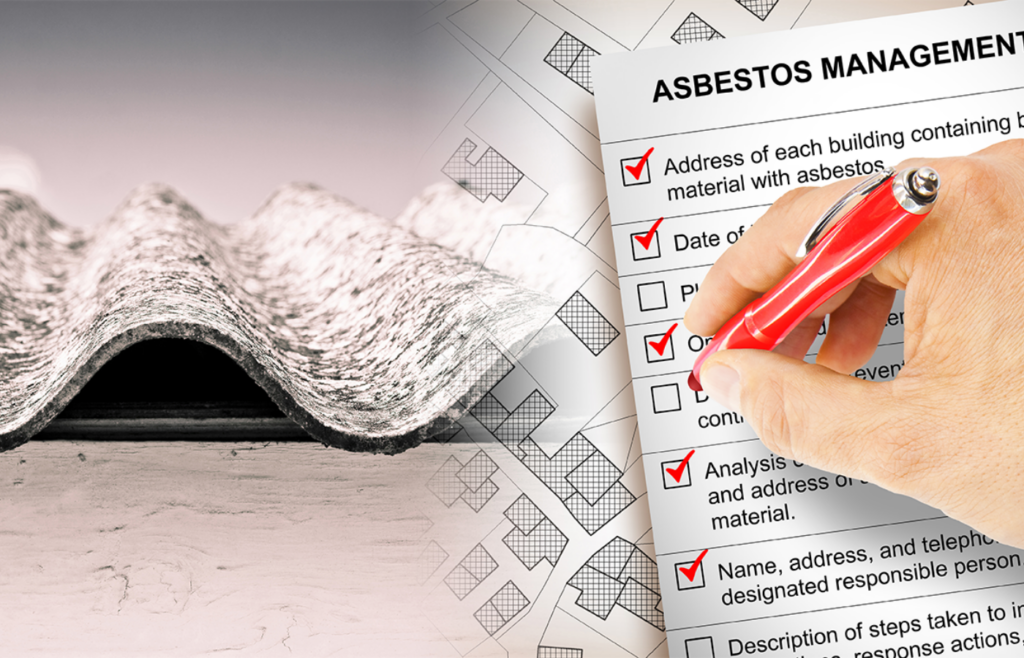
Working With OMC Consultants
Asbestos has a formidable reputation, and its prevalence means that dealing with it can be complex and time-consuming. For Duty Managers in particular, the responsibility for health and safety is paramount, and asbestos is one area where no mistakes can be made. Therefore, it is helpful to engage the services of a specialist asbestos consultant such as OMC Consultants Ltd, which allows you to manage the entire process with the partnership of an experienced professional team.
We can support you through the entire assessment and management process, from the original survey to determining priorities, to deciding on action steps. Expert ongoing guidance can increase efficiency and accuracy, creating a neat, cost-effective, and safe solution. Our asbestos consultants can also ensure that the management plan is accurate and compliant and offer support in long term asbestos management.
For managers and employees alike, the result is peace of mind and a safe working environment.
For more information, or to discuss your individual situation, please don’t hesitate to contact our asbestos management team using the details below:
Tel: +44 (0) 1484 425043
Email: [email protected]

